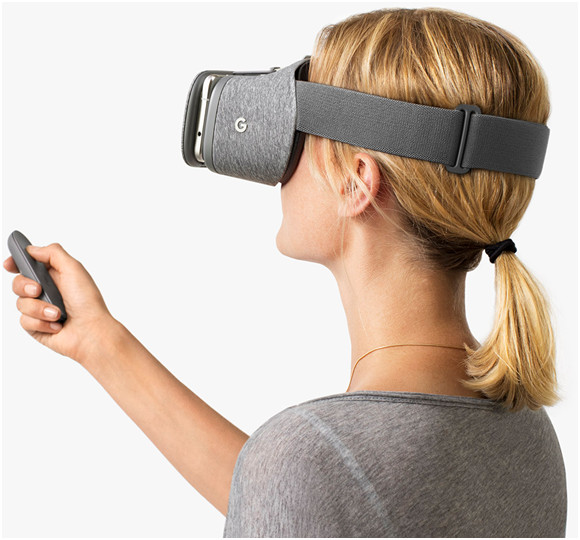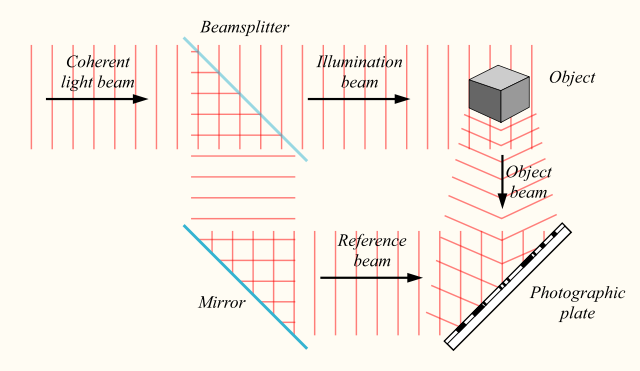Is a Photon a Particle or Wave. Is a light Field a Wave or a Ray? It depends on how you look at it.

Years ago, I was teaching an undergraduate optics class in a local private university. The reason I taught was that I hired a number of students from the university as part-time and graduate as full-time employees. I wanted to teach them what I needed and at the same time, the department wanted employment for their students and graduates. There was a question that was asked many times by the students, which was, “When is a photon a particle and when is it a wave?”

I had asked this questions many times myself in the past and got many different answers from both professors and books. When this question came up, I could not come up with a good answer. I was stumbling with the answers that I had heard and read before, including photoemissions, bandgaps, interferences, etc. I kept talking, but the answers did not satisfy me.
Surely, students were very much the same in every semester and I was asked the same questions over and over again, but I kept stumbling over and over again. Then, the “eureka moment” came a couple years later. Maybe after trying to answer many questions at work from peers and subordinates without perfect knowledge of the subject, I bought myself some time and said, “It depends on how you look at it”.
I felt very good that I had had some time to come up with the real answer. I further said, “If you use a ruler to measure it, it is a wave, as we would be measuring the wavelength. If you count the photons using a photon counter, e.g. a meter with a photoelectric cell made from materials with the appropriate bandgap, it is a particle as we will know how many photons are counted.” I repeated this answer many times afterwards and have continued to feel good about this answer since then.
I got involved with Virtual Reality, Augmented Reality, Light Field Cameras, 3D Displays, etc. a few years ago while I was working with reflectors trying to recreate floating images of objects with an extra dimension so that the floating image can move from place to place creating the 4th dimension. In contrast, traditional optics usually place the floating image fixed at one single location. For more details, an article on this subject “Analogue Light Field Displays are More Convincing than Digital” can be found here.
Light Fields Attract Attention
Recently, there have been tremendous resources spent on the development of VR, AR, and other light field related technologies and products, resulting in many gadgets and products. They all claimed to be “Light Field technologies”. I read some of the basic publications and indeed, they are all based on very complicated equations with single, double, and even triple integrals. They are really scary and I have to say that many people, including myself, have a hard time decoding them. I satisfy myself by saying that all these equations are really based on wave theories and, most likely, derived from the Maxwell’s Equations. On the other hand, all these equations are eventually applied using digital sensors for image capture and digital displays for viewing. The very basic unit is called the Pixel as we all know. They show up in cameras and in displays. These pixels can be counted, arranged, etc., in ways which are not shown or mentioned by any of the scary equations.
I started to think about my first job as a part-time programmer during my undergraduate years in the Planetary Science Department. There I was solving, numerically, the heat equation, with applications to the surface temperature of the moon irradiated by the sun. The first thing I had to do was to cut up the moon into many pieces in three dimensions, namely ?x, ?y, and ?z, and cut up the lunar days into many time slots as ?t. The end results were time sequence “plots” of temperatures, which were simply sequences of curves. The outputs were nothing like what one expects today. The computer used was the famous IBM 370 with 64K of RAM (K!!, not M and certainly not G). It was housed inside a large building. In later years I solved many equations numerically, such as Maxwell’s equations, Rate equations, Transport equations, etc., and all involved cutting up both space and time. This led me start thinking about the Pixel, which is simply a piece of the picture cut up by the hardware designers and processes by the programmers, whom we now call software developers.
Waves or Rays?
 The question when the term Light Field is used when we talk about VR and AR is “Are we referring to Wave or ray optics?”. I have thought about this for a long time myself and come up with the same answer, “It depends on how you look at it.” The subsequent statement is, “If you focus your eyes at the cut up pixels, it is Ray Optics. If you focus your eyes at the image in space, it is Wave Optics.” As I will mention later in this article, if you are confused, you are most likely be in the Wave Optics world.
The question when the term Light Field is used when we talk about VR and AR is “Are we referring to Wave or ray optics?”. I have thought about this for a long time myself and come up with the same answer, “It depends on how you look at it.” The subsequent statement is, “If you focus your eyes at the cut up pixels, it is Ray Optics. If you focus your eyes at the image in space, it is Wave Optics.” As I will mention later in this article, if you are confused, you are most likely be in the Wave Optics world.
One may think that it is very simple to tell the difference, as you should know where the eyes are focusing. The fact is that it is not as simple as one thinks. Many of us have experienced VR using two lenses in front of a cell phone, all housed inside a cardboard box, and seen the magnified pixels of the cellphone display. One may forgot about the pixels and become immersed in the content of the display, but nevertheless, the pixels are always there and it is a major complaint for such VR systems, as the resolutions are simply not high enough. We are in the Ray Optics world. For high-resolution displays, (or people with bad eyesight) the individual pixels cannot be seen, and this is where the confusions come in. Is it Wave or Geometric Optics?
Even though we are confused, this does not mean that laws of nature are also confused. The truth remains the same regardless of whether we look at with a wrong impression or confusion. Let’s consider the situation from another perspective.
Holograms
We all know about holograms. They are formed by the interference of a reference beam and the scattered light from an object using the output from a laser. During viewing, the wavefronts of the scattered beam from the object are reconstructed using a reference laser beam and as far as the viewer is concerned, the original object is there and looks real. It is obvious that this is a Wave Optics world as the viewer is looking at the reconstructed wavefronts. As technologies has advanced, very few holograms are made using laser beams any more. Instead, holograms are made digitally. The interference pattern of the reference beam and the scattered beam from the object are generated using computers and the digital hologram is generated by exposing the photographic film to light with information encoded as pixels. Again, a reference laser beam is used for viewing and the digital hologram generates the wavefronts of the object. In this case, although the digital holograms are generated digitally using pixels, it is also a Wave Optics situation as the viewer is looking at the wavefronts of the object generated by the digital hologram and not the pixels.
 Image: DrBob at the English language Wikipedia
Image: DrBob at the English language Wikipedia
As a matter of fact, many of the holograms these days are not made from photographic films; instead, many of them are “printed” or displayed using imagers made with Liquid Crystal on Silicon (LCOS). The LCOS hologram with the pixel patterns will generate the wavefronts in the same way as the film holograms and is also considered to be in the Wave Optics world. Furthermore, LCOS imagers can have the hologram patterns change in real time, and can be at video frame rates resulting in moving holographic images.
Then, what happens to the images from the VR, AR, and the Light Field displays we encounter these days? Again, are they in the Wave or Ray world?
Please stay tuned for the next episode.

